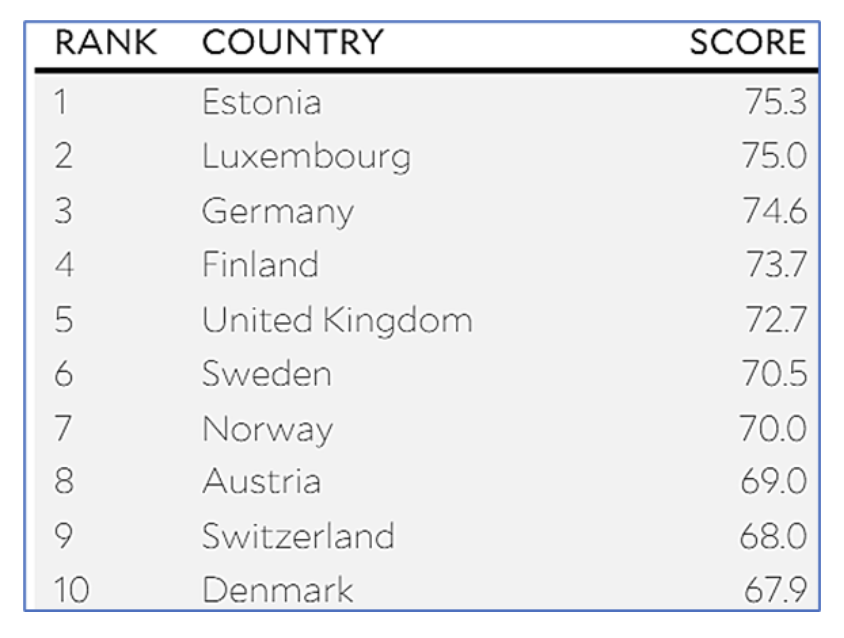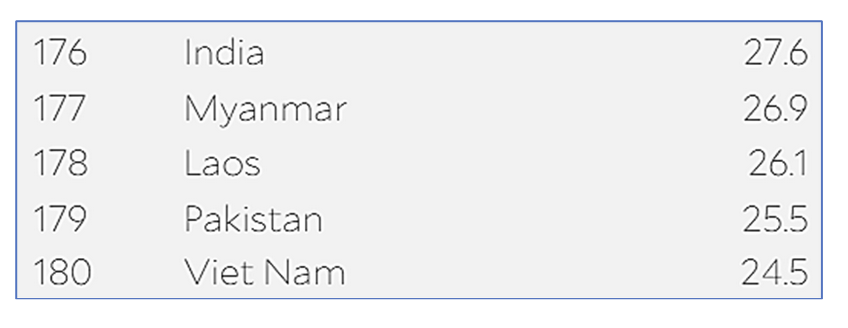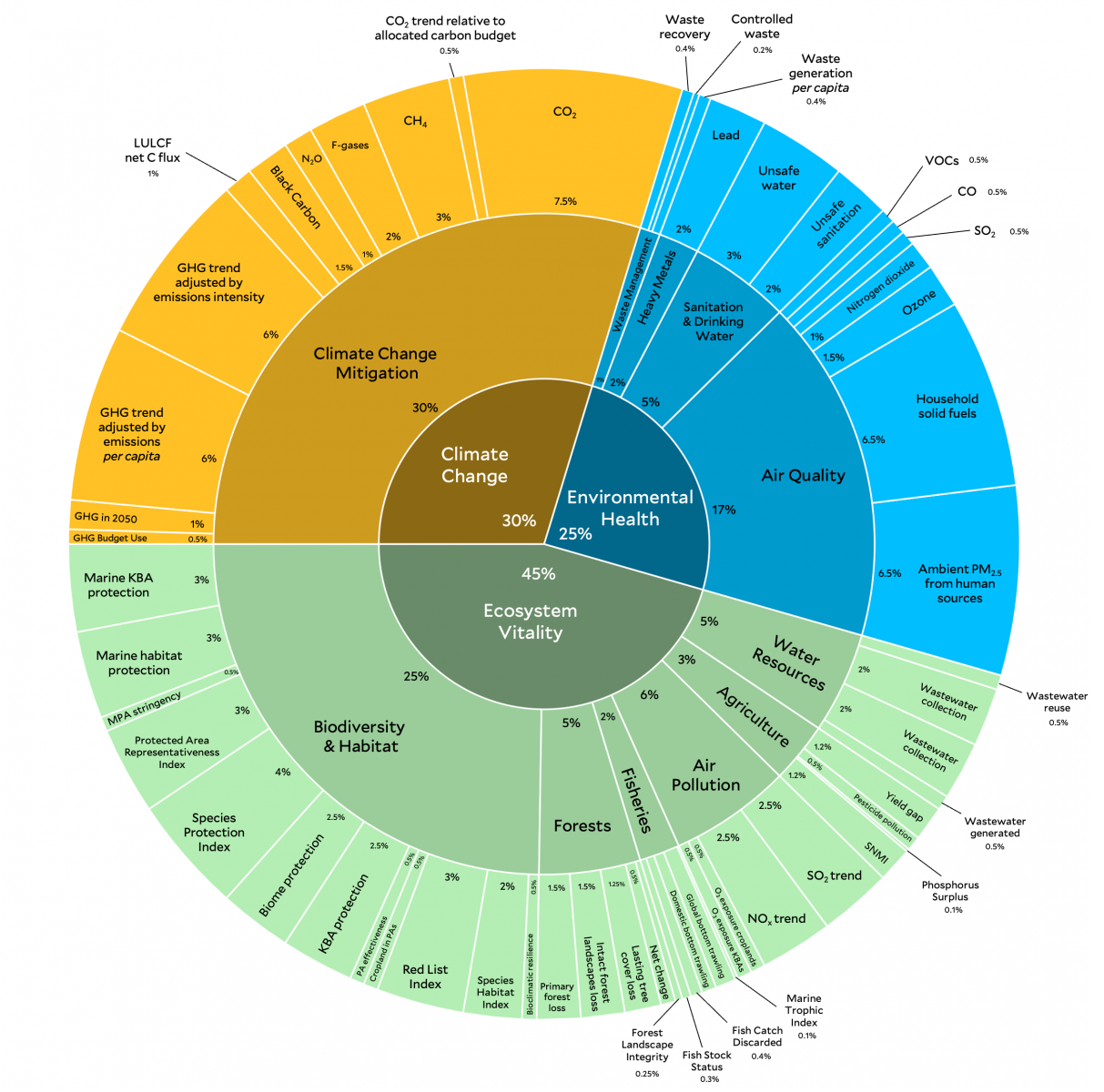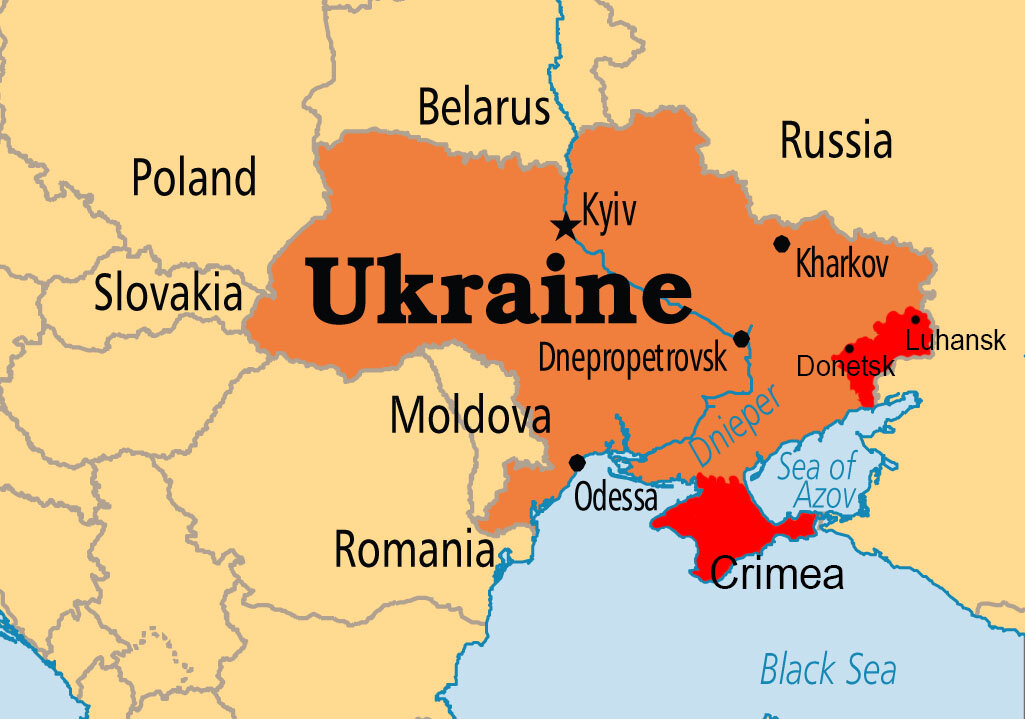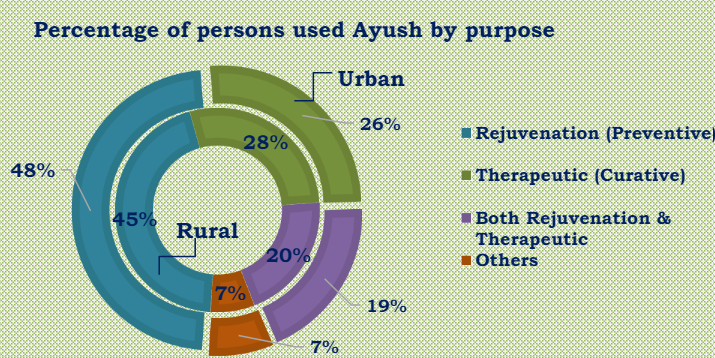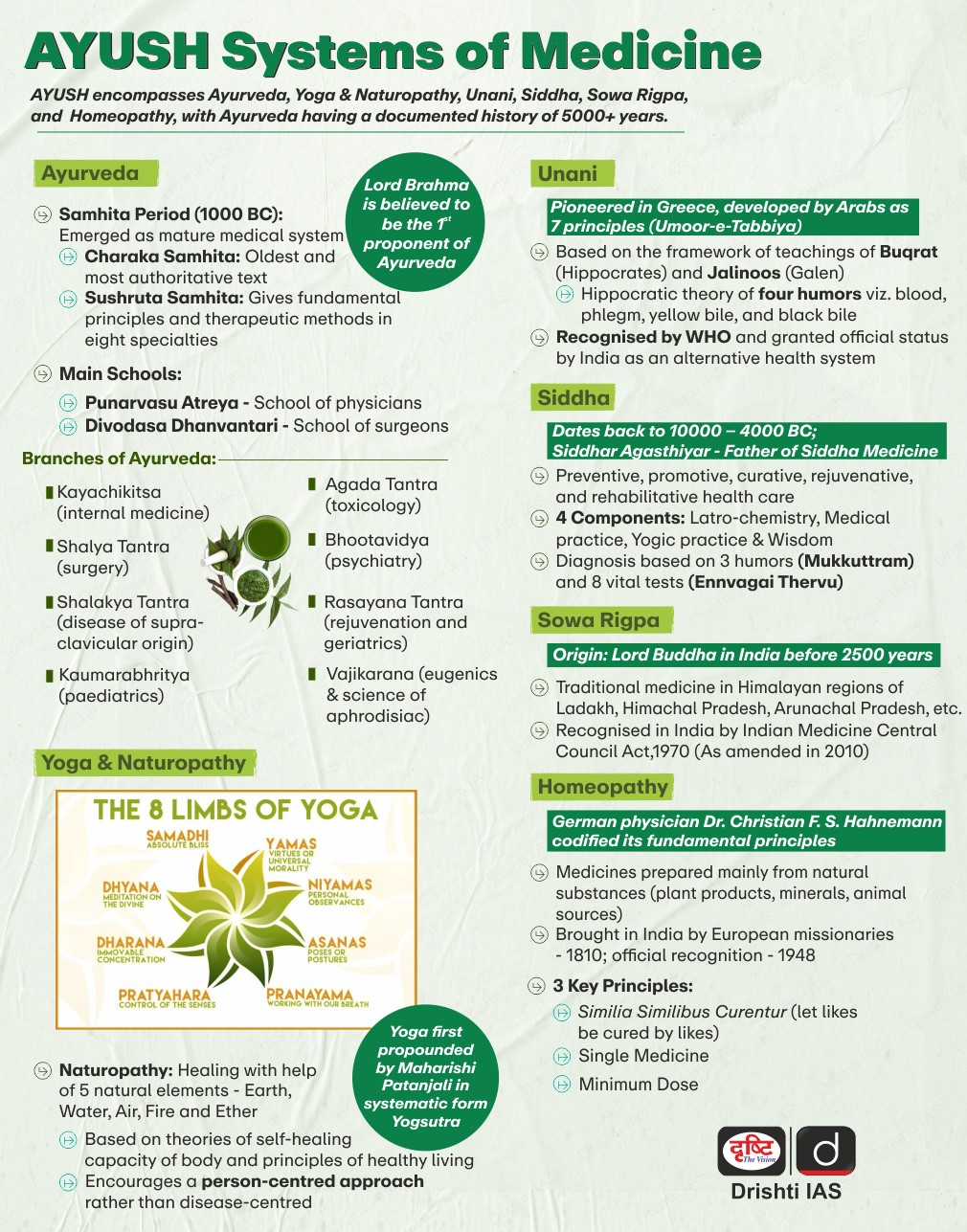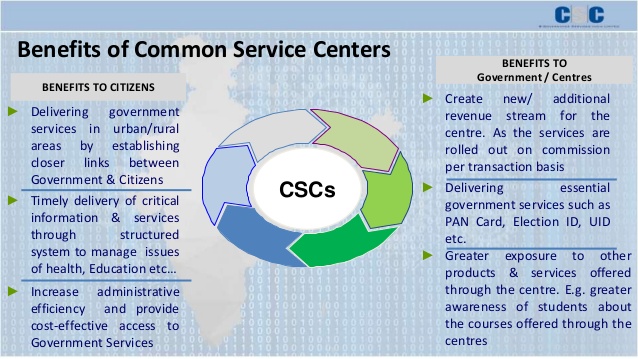Infographics
Biodiversity & Environment
E-flow Monitoring System
For Prelims: Environmental flows, National Mission for Clean Ganga, Namami Gange programme, Biodiversity Conservation, Biodiversity Conservation, Geographic Information Systems.
For Mains: Key Features of the E-flow Ecological Monitoring System, Issues Related to Namami Gange programme.
Why in News?
Recently, the Union Jal Shakti Ministry has introduced an innovative Environmental flows (E-flows) Monitoring System designed to facilitate real-time monitoring of river water quality and support the planning and oversight of projects related to river ecosystems.
- This system aims to enhance the management of water resources and environmental flows in key Indian rivers, including the Ganga and Yamuna.
What is Environmental Flow?
- About: Environmental flow (E-flow) is the quantity, timing, and quality of water flows required to maintain the health and functioning of aquatic ecosystems and support the livelihoods that depend on these ecosystems.
- E-flows are essential for sustaining the ecological integrity of rivers, lakes, and wetlands, ensuring that they can continue to provide important ecosystem services.
- Key Aspects of Environmental Flows:
- Quantity: Ensuring an adequate volume of water is maintained to support the ecological processes and species within the ecosystem.
- Timing: Preserving the natural variations in water flow, including seasonal and inter-annual fluctuations, to mimic the natural hydrological cycle.
- Quality: Maintaining water quality standards that are suitable for the health of the aquatic ecosystem, including appropriate levels of dissolved oxygen, temperature, and nutrient concentrations.
- Frequency: Ensuring that specific flow conditions (such as high flows, low flows, and flood events) occur with a regularity that supports the life cycles of aquatic species.
What are the Key Features of the E-flow Ecological Monitoring System?
- About: The E-flow Monitoring System was developed by the National Mission for Clean Ganga, a division of the Jal Shakti Ministry.
- The introduction of this system follows the 2018 mandate by the Centre to maintain minimum e-flows in various stretches of the Ganga throughout the year.
- This mandate was a response to concerns from environmental groups about the negative impact of dams on river ecology and flow.
- Key Features:
- Real-Time Monitoring: The system allows for the continuous analysis of water quality in the Ganga, Yamuna, and their tributaries.
- Centralised Oversight: It enables the monitoring of activities under the Namami Gange programme, particularly the performance of Sewage Treatment Plants (STPs).
- Comprehensive Data Analysis: Utilises quarterly reports from the Central Water Commission to track in-flow, out-flow, and mandated E-flow across 11 projects along the Ganga Mainstream.
What is the Namami Gange Programme?
- About: It is an Integrated Conservation Mission, approved as ‘Flagship Programme’ by the Union Government in June 2014 to accomplish the objective of effective abatement of pollution, conservation and rejuvenation of National River Ganga.
- Main Pillars:
- Sewerage Treatment Infrastructure
- River-Front Development
- River-Surface Cleaning
- Biodiversity Conservation
- Afforestation
- Industrial Effluent Monitoring
- Ganga Gram
- Public Awareness
- However, despite its ambitious goals and substantial funding, the Namami Gange Programme is falling short of its targets .
Why is the Namami Gange Programme Falling Short of its Goals?
- Delays in Project Execution: Many sewage treatment projects have faced delays due to issues with land acquisition and the need for revisions in Detailed Project Reports (DPRs).
- These challenges have slowed down the commissioning and operationalisation of crucial infrastructure and thereby falling short of desired objectives.
- Funding and Budget Allocation: Although the programme has received in-principle approval for projects worth Rs 37,396 crore, only Rs 14,745 crore has been released to the states for infrastructure work.
- This discrepancy between approved and disbursed funds has hindered the timely completion of projects.
- Insufficient Sewage Treatment Capacity: Despite significant investments, the programme has only managed to install treatment plants capable of treating about 20% of the sewage generated in the five major states along the Ganga.
- This capacity is expected to increase to only 33% by 2024 and 60% by 2026, falling short of the needs based on current and projected sewage generation.
- Persistence of Industrial Pollution: The program has struggled to address the issue of industrial pollution effectively.
- Many industries located along the Ganga continue to discharge untreated effluents, contributing to the river's pollution.
- According to the recent government estimates, about 402.67 million liters per day (MLD) of industrial effluents by 3,186 grossly polluting industries (GPI) are discharged into rivers Ganga and Yamuna.
What Measures can be Adopted to Enhance Conservation and Rejuvenation of Ganga River?
- Leverage Technology for Monitoring and Data Management: Utilise advanced technologies, such as remote sensing, Geographic Information Systems (GIS), and real-time monitoring systems, to effectively monitor the progress of the program and the health of the Ganga River.
- Develop a centralised data management platform to integrate data from various sources, enabling informed decision-making and adaptive management.
- Adopt-a-Ghat Initiative: Partnering with NGOs and local communities to launch an "Adopt-a-Ghat" program.
- Owner Groups can be held responsible for the cleanliness and beautification of specific ghats (riverfront steps) along the Ganga, fostering a sense of ownership and community involvement.
- Riverine Economy Incentives: Creating a "Ganga Riverine Economy" certification for businesses that adopt practices that minimise pollution and promote sustainable water usage.
- This could incentivize industries and hotels to become responsible stakeholders in the river's health.
- Floodplain Restoration: Identifying opportunities for floodplain restoration projects in the long run. Reconnecting the river with its natural floodplains can improve water filtration, reduce erosion, and provide critical habitat for aquatic life.
- Waste-to-Wealth Handicrafts: Supporting and incentivising the self help groups for the creation of eco-friendly handicrafts from waste collected along the riverbank.
- This can generate income for local communities, encourage waste collection, and promote sustainable practices.
|
Drishti Mains Question: Discuss the importance of maintaining environmental flows in river ecosystems. How does the e-flow monitoring system contribute to the rejuvenation and conservation of the Ganga River? |
UPSC Civil Services Examination, Previous Year Questions (PYQs)
Q. Discuss the Namami Gange and National Mission for Clean Ganga (NMCG) programmes and causes of mixed results from the previous schemes. What quantum leaps can help preserve the river Ganga better than incremental inputs? (2015)


Biodiversity & Environment
Environmental Performance Index 2024
For Prelims: Environmental Performance Index 2024, air quality, emissions, and biodiversity conservation, climate change category, net-zero emissions by 2070, additional carbon sinks, India's forests, wetlands, agro-biodiversity, soil health, food loss.
For Mains: Significance of Environmental Performance Index 2024.
Why in News?
The Yale Center for Environmental Law and Policy and the Columbia Center for International Earth Science Information Network released the Environmental Performance Index (EPI) for 2024.
What are the Key Highlights of EPI 2024?
- Global Scenario: Estonia leads the index by reducing its greenhouse gas emissions by 59% from 1990 levels.
- The report shows that only five countries — Estonia, Finland, Greece, Timor-Leste, and the United Kingdom — cut their GHG emissions at the rate needed to reach net zero by 2050.
- In contrast, Sub-Saharan Africa and Southern Asia rank lowest among the eight regions assessed.
- Apart from the United Kingdom, all countries identified in the 2022 Environmental Performance Index (EPI) report as being on track to achieve net zero emissions by 2050, and have either seen slow progress, as in the United States, or their emissions are still increasing, as seen in China, India, and Russia.
- India’s Performance: India ranks 176th out of 180 countries with 27.6 points, placing above only Pakistan, Vietnam, Laos, and Myanmar.
- It performs poorly in Air quality, Emissions, and Biodiversity Conservation, largely due to its heavy reliance on coal, which contributes significantly to greenhouse gas emissions and air pollution levels.
- Specifically, India ranks 177th in air quality and 172nd in projected emissions by 2025.
- It performs poorly in Air quality, Emissions, and Biodiversity Conservation, largely due to its heavy reliance on coal, which contributes significantly to greenhouse gas emissions and air pollution levels.
- The Largest Emitter Of Transboundary Pollution: In South Asia, India is identified as the largest emitter of transboundary pollution, impacting neighbouring Bangladesh and affecting residents' well-being.
- Despite its low overall ranking, India fares relatively better (133rd) in the climate change category, due to investments in renewable energy and a commitment to achieving net-zero emissions by 2070.
- However, achieving these goals will require an additional USD 160 billion annually in climate change mitigation investments.
- Despite its low overall ranking, India fares relatively better (133rd) in the climate change category, due to investments in renewable energy and a commitment to achieving net-zero emissions by 2070.
- New Metrics Introduced: The 2024 EPI introduces pilot indicators to measure the effectiveness and stringency of protected areas.
What are the Issues Related to EPI?
- Issues Raised By India:
- Projected GHG Emissions Calculation: The calculation of projected GHG emissions by 2050 is based on the average rate of change in emissions, which India considers inadequate.
- Measurement of biodiversity loss or ecosystem health can be challenging due to the intricate dynamics involved and the lack of standardised methodologies across all regions.
- Carbon Sinks Exclusion: India's forests and wetlands, which act as crucial carbon sinks, have not been factored into the computation of projected GHG emissions trajectory up to 2050 in the EPI 2024.
- Ecosystem Condition Overlooked: While the index computes the extent of ecosystems, it does not evaluate their condition or productivity.
- Lack of Relevant Indicators: The index does not include indicators like agro-biodiversity, soil health, food loss, and waste, developing nations may lack robust monitoring systems or face difficulties in collecting comprehensive environmental data, which are important for developing countries with large agrarian populations.
- Issues In General:
- Balancing National Priorities: Countries may prioritise economic development over environmental protection, leading to potential conflicts or resistance in implementing EPI recommendations.
- Nations heavily reliant on resource extraction or fossil fuel-based industries may face challenges in transitioning to more sustainable practices.
- Funding and Resource Constraints: Developing countries may struggle to allocate sufficient funds or expertise for environmental projects, hindering progress and developed countries have not allocated sufficient money to the developing nation for mitigation.
- Cross-Border Environmental Impacts: Addressing transboundary issues such as air pollution, water management, or wildlife protection may require multilateral agreements and joint efforts.
- Balancing National Priorities: Countries may prioritise economic development over environmental protection, leading to potential conflicts or resistance in implementing EPI recommendations.
What is the Environmental Performance Index?
- About: The Environmental Performance Index (EPI) is a biennial index, initially launched by the World Economic Forum in 2002 under the name Environmental Sustainability Index (ESI).
- Evaluation Target: It evaluates nations' efforts to meet international environmental policy targets such as the U.N. sustainability goals, the Paris Climate Change Agreement (2015), and the Kunming-Montreal Global Biodiversity Framework.
- Framework: The 2024 EPI leverages 58 performance indicators grouped into 11 issue categories with 3 policy objectives:
- Environmental Health
- Ecosystem Vitality
- Climate Change
- The EPI team transforms the raw environmental data into indicators that place countries on a 0–100 scale from worst to best performance.
- Significance:
- Good Governance: Strong governance frameworks, characterised in the EPI framework such as transparency, accountability, and effective policymaking, are essential for promoting and enforcing environmental regulations and policies.
- Financial Resources: Adequate financial resources play a pivotal role in implementing and sustaining environmental initiatives, enabling countries to invest in sustainable practices and infrastructure.
- Human Development: Countries with higher levels of human development, including factors such as education, healthcare, and overall well-being, tend to prioritise environmental sustainability and can implement effective measures.
- Regulatory Quality: Robust and well-designed environmental regulations, coupled with effective enforcement mechanisms, are critical for mitigating environmental degradation and ensuring compliance with sustainability standards.
What are the Environmental Conservation Programmes in India?
- Climate Change: National Action Plan on Climate Change
- Desertification: National Action Programme to Combat Desertification
- Pollution Control: National Clean Air Program
- Environmental Impact Assessment: Environment Management Plan
- Forest Protection: National Afforestation Programme
- Species Conservation: Project Elephant, Project Tiger
Way Forward
- Enhance Methodology and Carbon Sequestration: Incorporate a longer time frame (e.g., 20-30 years) to calculate the projected GHG emissions trajectory, instead of relying solely on the average rate of change over the last 10 years.
- Efforts to enhance carbon sequestration through initiatives like the Compensatory Afforestation Fund Management and Planning Authority (CAMPA) should be recognised.
- Expand Set of Indicators: Include indicators that are relevant to developing countries with large agrarian populations, such as agro-biodiversity, soil health, food loss, and waste management.
- For India, the EPI could incorporate indicators like the area under organic farming, crop diversification, and measures to reduce post-harvest losses, reflecting the country's efforts toward sustainable agriculture.
- Transparent Weighting and Funding: Provide clear and transparent explanations for any changes in the weighting of indicators, addressing concerns raised by countries like India.
- Engage in consultations with stakeholders, including government representatives and experts, to ensure that the weighting of indicators aligns with global priorities and national contexts.
|
Drishti Mains Question; Discuss the Key findings of the Environmental Performance Index (EPI) 2024 and and what global challenges exist in mitigating the environmental impacts identified in the report? |
UPSC Civil Services Examination, Previous Year Question (PYQ)
Prelims
Q.1 Which of the following best describes/describe the aim of ‘Green India Mission’ of the Government of India? (2016)
- Incorporating environmental benefits and costs into the Union and State Budgets thereby implementing the ‘green accounting’.
- Launching the second green revolution to enhance agricultural output so as to ensure food security to one and all in the future.
- Restoring and enhancing forest cover and responding to climate change by a combination of adaptation and mitigation measures.
Select the correct answer using the code given below.
(a) 1 only
(b) 2 and 3 only
(c) 3 only
(d) 1, 2 and 3
Ans: (c)
Q.2 With reference to ‘Global Climate Change Alliance’, which of the following statements is/are correct? (2017)
- It is an initiative of the European Union.
- It provides technical and financial support to targeted developing countries to integrate climate change into their development policies and budgets.
- It is coordinated by World Resources Institute (WRI) and World Business Council for Sustainable Development (WBCSD).
Select the correct answer using the code given below:
(a) 1 and 2 only
(b) 3 only
(c) 2 and 3 only
(d) 1, 2 and 3
Ans: (a)
Mains
Q.1 Describe the major outcomes of the 26th session of the Conference of the Parties (COP) to the United Nations Framework Convention on Climate Change (UNFCCC). What are the commitments made by India in this conference? (2021)

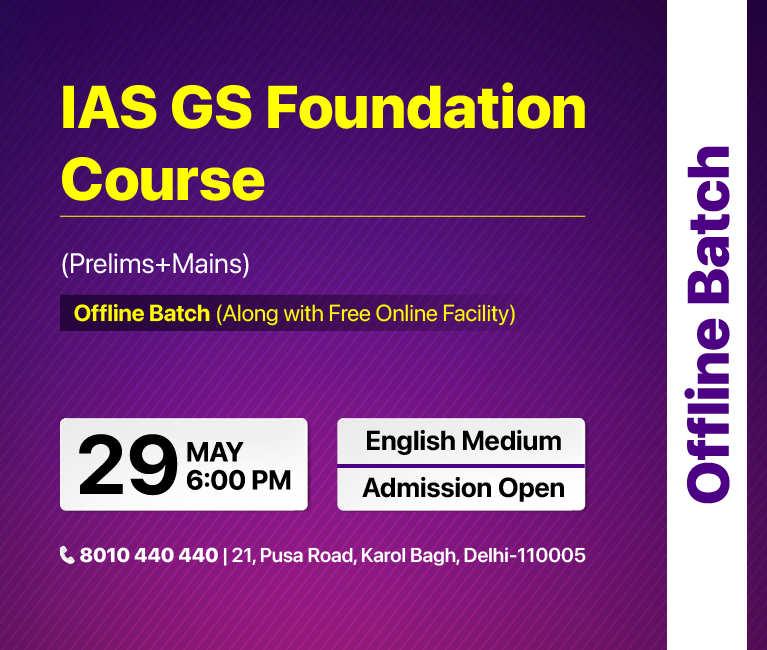
Economy
Base Erosion and Profit Shifting
For Prelims: Global minimum corporate tax rate, Organisation for Economic Co-operation and Development (OECD), Base Erosion and Profit-Shifting (BEPS), G20, digital transactions, equalisation levy
For Mains: Role of Organisation for Economic Co-operation and Development (OECD) in addressing global challenges, the significance of Base Erosion and Profit-Shifting (BEPS) in promoting cooperation.
Source: OECD
Why in News?
Recently, the Organisation for Economic Co-operation and Development (OECD) welcomed the commitment of the 147 Members of the Inclusive Framework on Base Erosion and Profit-Shifting (BEPS) to keep working to resolve any remaining issues in the signing process of the Multilateral Convention (MLC).
What is Base Erosion and Profit Shifting (BEPS)?
- About
- The BEPS initiative is an OECD initiative, approved by the G20, to identify ways of providing more standardised tax rules globally.
- BEPS refers to tax strategies exploiting differences in tax rules across countries to minimise overall corporate tax payments.
- Aim:
- This strategy aims to reduce overall corporate tax liability by making profits seem to vanish or by moving them to low-tax regions with minimal real economic activity.
- While often not illegal, BEPS tactics capitalise on variations in international tax regulations.
- Developing countries are particularly vulnerable to BEPS due to their strong dependence on corporate income tax, especially from multinational corporations.
- This strategy aims to reduce overall corporate tax liability by making profits seem to vanish or by moving them to low-tax regions with minimal real economic activity.
- Inclusive Framework on BEPS:
- Inclusive Framework was established by the OECD and G20 in 2016.
- It unites 147 countries and jurisdictions, to combat tax avoidance and promote equitable tax practices, and comprises two pillars.
- First Pillar:
- It addresses cross-border profit shifting by multinational and digital companies.
- It aims to ensure these large enterprises pay taxes where they generate profits, potentially reallocating over USD 100 billion annually to market jurisdictions.
- Second Pillar:
- It proposes a global minimum corporate tax rate, currently suggested at 15%, to prevent harmful tax competition among countries.
- It will raise significant revenues of up to USD 192 billion per year for developed and developing countries.
- First Pillar:
What is the Global Minimum Tax (GMT)?
- A globally agreed minimum tax rate, currently suggested at 15% could mitigate tax base erosion without putting the companies at a financial disadvantage.
- Through GMT, leading nations seek to curb profit shifting by multinationals to low-tax jurisdictions, irrespective of where their actual sales occur.
- There's a growing trend of companies moving income from intangibles like patents, software, and IP royalties to tax havens, thereby sidestepping higher taxes in their home countries.
- The G20 and the OECD will spearhead crucial decisions regarding this global minimum tax initiative.
What is the Significance of BEPS?
- Equitable Tax Contributions: It ensures multinational enterprises (MNEs) pay their fair share where they do business. For example, A global coffee chain would pay taxes in each country where it sells, not just where it's headquartered.
- Fiscal Healing: It helps governments raise crucial funds to mend public finances strained by various unforeseen conditions (Man-made or Natural disasters).
- A country can use additional tax revenue to reduce pandemic-induced debt. Increased tax income allows for upgrading healthcare facilities or expanding broadband access.
- Competitive Balance: It reduces the tax advantages of larger corporations over smaller, domestic businesses.
- Digital-Era Readiness: This tax systems catch up with online commerce. Like, An e-commerce platform pays taxes where customers shop, even without physical stores.
- Worldwide Teamwork: It emphasises an international commitment to solving cross-border tax challenges.
What is the OECD?
- It is an intergovernmental economic organisation, founded in 1961 with its Headquarters in Paris, France.
- It has a total membership of 38 countries.
- India is not a member but a key partner of the OECD.
- It aims to stimulate economic progress and world trade.
- Most OECD members are high-income economies and are regarded as developed countries.
What is India's Position on Global Tax Reform?
- Signing Global Tax Reform: Indian multinational enterprises will have to start reviewing and accounting for any additional tax liability as per the global tax reform signed by India.
- For Example, India joined the Multilateral Competent Authority Agreement on Automatic Exchange of Financial Account Information in 2015.
- It is to exchange a wide range of financial information after collecting the same from financial institutions in their country/jurisdictions
- Consensus-Driven Solution: The country supports a consensus-driven solution that's easy to implement and comply with.
- India advocates for broader implementation of the new tax law to ensure it doesn't collect less than its current equalisation levy revenue.
- Abiding Market Jurisdiction: India emphasises that the solution should allocate substantial and sustainable revenue to market jurisdictions, especially developing and emerging economies.
- The Two-Pillar Plan aligns with India's stance on granting markets a larger profit share and factoring in demand-side elements in profit allocation.
- India has ratified the Multilateral Convention to Implement tax treaty-Related Measures to Prevent Base Erosion and Profit Shifting.
Note:
- India initiated a 6% levy on online advertisement services by non-residents in 2016. From 1st April 2020, a 2% levy was imposed on digital transactions by foreign entities operating in India or accessing the local market.
What are the Concerns Related to Global Tax Reform?
- Sovereignty Issues: The reform may infringe upon a nation's sovereign right to determine its own tax policies.
- A global minimum tax rate could deprive countries of a policy instrument used to promote their individual interests.
- Limiting Tax Competition: Some argue that the fear of tax competition restrains governments from imposing excessive taxes on citizens to finance extravagant spending.
- Effectiveness: Critics, including organisations like Oxfam, question the reform's potency, suggesting it may not eliminate tax havens as multinational companies continue to engage in aggressive tax planning strategies that exploit regulatory gaps and inconsistencies.
- Such as a multinational tech might sell intellectual property rights (such as patents or trademarks) to a subsidiary located in a low-tax jurisdiction at a price that undervalues these assets.
Way Forward
- Flexible Implementation: Allow countries to adapt the rules to their specific economic contexts while maintaining the spirit of the agreement.
- For example, a developing country might be permitted a grace period before fully implementing the minimum tax rate.
- Strengthen International Cooperation: Enhance information sharing and joint audits to tackle complex cross-border tax issues.
- Such as the Multilateral Competent Authority Agreement on Automatic Exchange of Financial Accounts.
- Public Transparency: Encourage or mandate public country-by-country reporting by large multinationals.
- Like, a tech giant publicly disclosing how much revenue it earned and tax it paid in each country of operation.
|
Drishti Mains Questions: How do base erosion and profit shifting (BEPS) impact countries globally? What challenges do countries face in effectively addressing BEPS? |
UPSC Civil Services Examination, Previous Year Question (PYQ)
Prelims
Q. The term ‘Base Erosion and Profit Shifting’ is sometimes seen in the news in the context of (2016)
(a) mining operation by multinational companies in resource-rich but backward areas
(b) curbing of the tax evasion by multinational companies
(c) exploitation of genetic resources of a country by multinational companies
(d) lack of consideration of environmental costs in the planning and implementation of developmental projects
Ans: (b)
Mains
Q. If the last few decades were Asia’s growth story, the next few are expected to be Africa’s. In light of this statement, examine India’s influence in Africa in recent years. (2021)

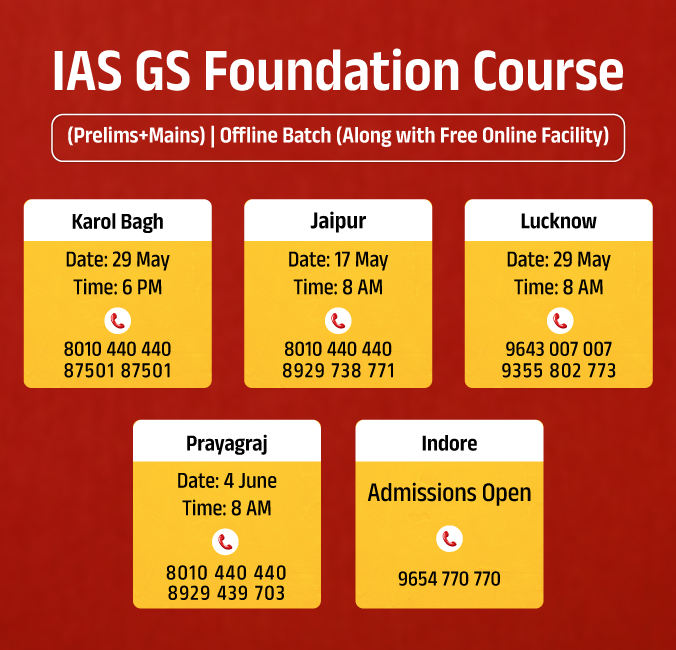
International Relations
Ukraine “Path to Peace” Summit
For Prelims: Russia-Ukraine Conflict, Regions of Donetsk and Luhansk, Black Sea, Cold War, NATO, Minsk Protocols, Warsaw Pact.
For Mains: Ukraine-Russia Conflict and India’s Interests in Ukraine and Russia, Implications of Conflict on India.
Why in News?
- Recently, the two-day Summit on Peace in Ukraine titled “Path To Peace Summit”, held in Switzerland, ended on 16th June 2024.
- Through this summit, participants hoped for an end to the war between Russia and Ukraine.
What were the Key Highlights of the Summit?
- Call for Territorial Integrity of Ukraine:
- 80 countries have called for the “territorial integrity” of Ukraine to be the basis for any peace agreement to end the Russia-Ukraine war.
- They supported the final joint communiqué that outlined a "Path to Peace" and focused on 3 agendas: nuclear safety, global food security, and humanitarian issues.
- Release of Prisoners of War:
- The declaration emphasised the release of all prisoners of war and the return of all deported and unlawfully displaced Ukrainian children and civilians.
- Absence of Russia from Peace Summit:
- Russia, the primary party to the conflict, was not invited by the host, Switzerland, due to the International Criminal Court's indictment of President Vladimir Putin.
- India’s Refusal to Endorse Ukraine Meet Statement:
- India along with Saudi Arabia, South Africa, and the United Arab Emirates refused to sign onto the final document released at the conclusion of a Peace Summit.
- India emphasised that only proposals acceptable to both Russia and Ukraine can lead to peace.
What is India’s Stand in the Russia-Ukraine Conflict?
- Commitment to Non-Alignment:
- India's non-aligned foreign policy, with its origins in the Bandung Conference of 1955, has been a central tenet of its approach to international conflicts.
- India has opted to abstain on UN Security Council (UNSC) resolutions regarding Russia's actions in Ukraine. This aligns with their established policy of neutrality in major power disputes.
- Preserving Strategic Partnership with Russia:
- India regards Russia as a crucial strategic partner, with Russia being a significant supplier of military hardware and energy resources to India.
- According to data from the Stockholm International Peace Research Institute (SIPRI), Russia accounted for approximately 46% of India's total arms imports between 2017-2021.
- India regards Russia as a crucial strategic partner, with Russia being a significant supplier of military hardware and energy resources to India.
- Humanitarian Assistance and Diplomatic Efforts:
- India has taken various steps to address the humanitarian aspects of the conflict by providing humanitarian aid to Ukraine, including medical supplies and relief materials.
- Furthermore, India emphasised the need for a diplomatic solution to the conflict and has urged both Russia and Ukraine to engage in dialogue in various international forums, reflecting India's efforts to promote a peaceful resolution to the crisis.
- Balancing Ties with the West:
- While maintaining its strategic partnership with Russia, India has also tried to balance its ties with the US and the European Union (EU), which are India's largest trading partners.
- This is aimed at protecting India's economic and geopolitical interests in the face of the evolving international landscape.
- While maintaining its strategic partnership with Russia, India has also tried to balance its ties with the US and the European Union (EU), which are India's largest trading partners.
What are the Areas of Cooperation between India and Russia?
- Trade and Economic Cooperation:
- India-Russia relations have been a key pillar of India's foreign policy since the signing of the "Declaration on the India-Russia Strategic Partnership" in 2000, which was further elevated to a "Special and Privileged Strategic Partnership" in 2010.
- In 2021, the two countries held their first 2+2 Dialogue (Foreign and Defence Ministers of both countries), highlighting the deeper collaboration.
- India has announced a USD 1 billion line of credit for the development of Russia's Far East.
- Defence and Security:
- It is guided by the Agreement on the Programme for Military Technical Cooperation signed between the two countries.
- The Agreement on Program of Military-Technical Cooperation from 2021-2031 was signed during the inaugural meeting of the India-Russia 2+2 Dialogue held in Delhi in December 2021.
- India is the top purchaser of Russian military equipment, including the S-400 Triumf Missile system, Kamov 226 helicopters, and T-90S tanks.
- Both countries are also collaborating on developing defence technologies such as the BrahMos supersonic cruise missile and conducting joint military exercises like INDRA & AviaIndra.
- Energy Cooperation:
- Russia has vast natural gas reserves and India is shifting towards using more natural gas, actively importing from the Russian Far East.
- India and Russia signed their first nuclear cooperation agreement in 1963. It led to construction of reactors at Kudankulam Nuclear Power Plant commissioned in 2016.
- Both are working on the Rooppur Nuclear Power Project in Bangladesh.
- In 2018, they agreed to jointly develop Small Modular Reactors (SMRs), which are small, efficient nuclear reactors used for electricity generation or industrial heat production.
- International Cooperation:
- India and Russia are members of various multilateral organisations, such as BRICS, Russia-India-China Grouping (RIC), G20, East Asia Summit, and Shanghai Cooperation Organisation (SCO), which provide opportunities for cooperation on mutual issues.
- Russia supports India's aspiration for a permanent seat in the UN Security Council (UNSC).
- Russia has endorsed India's membership in the Nuclear Suppliers Group (NSG) and Asia Pacific Economic Cooperation (APEC).
- Russia is considerate of India's stance on the Jammu and Kashmir issue in relation to Pakistan.
- The two countries are involved in connectivity projects like the International North-South Transport Corridor (INSTC).
- Cyber Security:
- India and Russia have an "Agreement on Cooperation in International Information Security" to work together in cyber security.
- They are also collaborating to combat radicalization and cyberterrorism. Additionally, India plans to work with the Russian Quantum Center to utilise quantum cryptography for enhanced information security in various sectors.
What are the Global Implications of the Russia-Ukraine War?
- Geopolitical Implications: War has led countries to align with Russia, Ukraine, or remain non-aligned. The EU has imposed sanctions on Russia, while the UK supports Ukraine. Many developing countries prioritise pragmatic relationships, staying non-aligned.
- The war has driven increases in European defence budgets, strengthening partnerships like NATO, shifting the global balance of power.
- Turkey doesn't fully align with all NATO proposals, particularly on economic sanctions.
- Strained Global Institutions: The war has exposed limitations of international institutions like the UN to prevent major conflicts. Countries may question the effectiveness of these bodies, potentially leading to a shift in how international disputes are addressed.
- Massive Displacement: The UN estimates over 11 million Ukrainians have fled their homes, creating a significant refugee crisis in Europe and internally displaced populations within Ukraine. This has placed immense strain on neighbouring countries and international aid organisations.
- UNICEF reports that two-thirds of Ukrainian children have been negatively impacted by the war, facing displacement, psychological trauma, and disruptions to education.
- Threatened Food Security: Ukraine is a major agricultural producer, supplying a significant portion of the world's wheat, corn, and sunflower oil. The war has disrupted planting, harvesting, and exports exacerbating existing food insecurity issues and potentially leading to shortages in vulnerable regions.
- Disruption in Global Energy Market: Russia's role as a major energy exporter has caused disruptions in global energy markets. Sanctions and boycotts have led to price hikes for oil and gas, impacting energy security and inflation worldwide.
What are the International Efforts to Establish Peace between Russia and Ukraine?
- Ukrainian 10-Point Peace Plan: It was promoted by the President of Ukraine since the 2023 G-20 Summit and outlined key demands.
- Withdrawal of Russian troops from Ukrainian territory.
- Restoration of Ukraine's territorial integrity as per its internationally recognised borders established in 1991.
- Prosecution of war crimes committed by Russia.
- Minsk Agreements, 2015:
- Minsk Agreements were signed in 2014 and 2015 in the Belarusian capital Minsk.
- The Minsk agreements were discussed and agreed upon with the involvement and support of France, Germany, and the Organization for Security and Co-operation in Europe (OSCE). These agreements were signed by Ukraine, Russia, and the representative of the OSCE. It aimed to end the initial phase of the conflict in eastern Ukraine. It included:
- A ceasefire between Ukrainian forces and pro-Russian separatists.
- Withdrawal of heavy weaponry from the conflict zone.
- Full Ukrainian government control over the eastern Donbas region.
- United Nations Efforts: UN experts have consistently called for intensified efforts by the international community to achieve peace in line with the UN Charter. This includes respecting Ukraine's sovereignty, independence, unity, and territorial integrity as outlined by the UN Secretary-General.
|
Drishti Mains Question: Discuss the geopolitical and economic implications of the ongoing Russia-Ukraine conflict. Analyse the appropriate approach need to be adopted in this complex scenario. |
UPSC Civil Services Examination, Previous Year Question:
Q. Consider the following countries: (2023)
- Bulgaria
- Czech Republic
- Hungary
- Latvia
- Lithuania
- Romania
How many of the above-mentioned countries share a land border with Ukraine?
(a) Only two
(b) Only three
(c) Only four
(d) Only five


Governance
First All-India Survey on AYUSH
For Prelims: National Survey on AYUSH, AYUSH, Ministry of Ayush, National Ayush Mission
For Mains: Initiatives Related to AYUSH, Importance of Traditional Medicine
Why in News?
Recently, the Ministry of Statistics and Programme Implementation (MoSPI) released the findings of a national survey on Ayurveda, Yoga & Naturopathy, Unani, Siddha and Homoeopathy (AYUSH) systems of medicine.
What are the Highlights of the Survey?
- About:
- This is the first-ever all-India AYUSH survey conducted by the National Sample Survey Office (NSSO) from July 2022 to June 2023, that provides valuable insights into the utilisation patterns of these traditional healthcare practices within the Indian population.
- This survey covered the entire Indian Union, excluding a few inaccessible villages in the Andaman & Nicobar Islands.
- This is the first-ever all-India AYUSH survey conducted by the National Sample Survey Office (NSSO) from July 2022 to June 2023, that provides valuable insights into the utilisation patterns of these traditional healthcare practices within the Indian population.
- Objectives: To collect information on:
- Awareness of people about the traditional system of healthcare (AYUSH system of medicine).
- Uses of AYUSH for prevention or treatment of ailments.
- Awareness of the households about home remedies, medicinal plants, local health tradition/folk medicine.
- Gathering information on household expenditure for treatments using AYUSH medicine systems.
- Key Findings:
- Awareness of AYUSH:
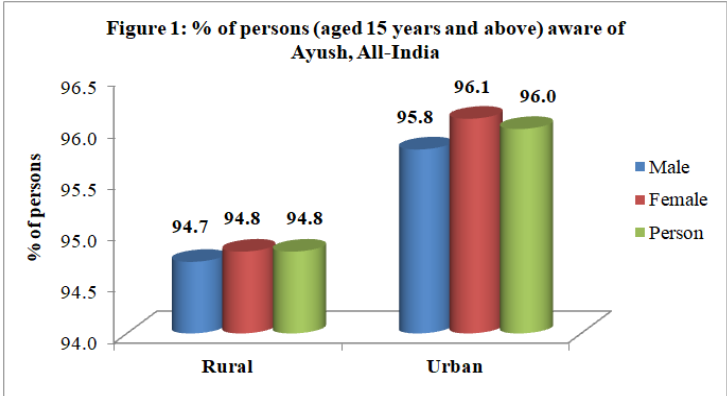
- In rural India, around 95% of males and females (aged 15 and above) are knowledgeable about AYUSH, while in urban areas the awareness rate is around 96%.
- About 79% of households in rural India and about 80% in urban India have at least one member aware about medicinal plants and home medicines.
- Around 24% of the households (in both rural and urban India) have at least one member aware about folk medicine or local health tradition.
- Use of AYUSH:
- Around 53% of people in urban areas and 46% in rural areas have used AYUSH for prevention or treatment of ailments, during the last 365 days.
- Expenditure Incurred for Availing Treatment of AYUSH:
- The average expenditure per person for prevention or treatment of ailments using AYUSH stood at Rs. 574/person in urban areas and Rs. 472/person in rural areas.
- Use of AYUSH System by Purpose:
- Awareness of AYUSH:
- Practice of Yoga:
- In around 1.1 crore households in rural India and around 1.4 crore in urban India, at least one member of the household is found to practice yoga regularly.
AYUSH
- AYUSH is the acronym of the medical systems that are being practised in India such as:
- Ayurveda: Ancient system emphasising holistic well-being.
- Yoga: Union of body, mind, and spirit through physical postures and meditation.
- Naturopathy: Natural healing using elements like water, air, and diet.
- Unani: Balance restoration through herbal medicines and humoral theory.
- Siddha: Traditional Tamil medicine with roots in five elements and humours.
- Homoeopathy: Highly diluted remedies stimulating self-healing responses.
- These systems are based on definite medical philosophies and represent a way of healthy living with established concepts on prevention of diseases and promotion of health.
- The Ministry of AYUSH, is responsible for developing education, research and propagation of AYUSH in India.
What are the Government Schemes Related to Promotion of AYUSH in India?
- Centrally Sponsored Schemes:
- National Ayush Mission:
- It was launched in 2014 to promote the traditional and cost-effective AYUSH system of medicine in India.
- It focuses on strengthening infrastructure development, promoting education and research, manpower augmentation, and quality control in AYUSH.
- National Ayush Mission:
- Central Sector Schemes:
- Ayur Gyan:
- The scheme aims to promote education, research, and innovation in Ayush and has been approved for the period from FY 2021-22 to FY 2025-26.
- It involves 2 components: Capacity Building and Continuing Medical Education (CME) in AYUSH to provide training and bridge knowledge gaps for AYUSH professionals and Research & Innovation in AYUSH to supports research in AYUSH systems, focusing on priority areas aligned with national health programs.
- AYURSWASTHYA:
- The AYURSWASTHYA Yojana's Centre of Excellence program grants money to organisations and institutes working in AYUSH. This funding helps them improve their facilities, research, and overall operations.
- Champion Service Sector Scheme:
- It aims to boost medical tourism in India. It goes beyond just promoting traditional medicine systems like Ayurveda and Yoga.
- The scheme also aims to attract a surge of international patients, tourists, and visitors seeking these unique healthcare options in India.
- Promotion of International Cooperation in AYUSH:
- It aims to promote and strengthen awareness and interest about AYUSH Systems of Medicine and to facilitate International promotion, development and recognition of AYUSH.
- Ayush Oushadhi Gunvatta Evam Uttpadan Samvardhan Yojana:
- It aims to upgrade AYUSH medicine quality and manufacturing in India making them safer, more trusted, and potentially exported worldwide.
- Conservation, Development, and Sustainable Management of Medicinal Plants:
- It aims at promotion, cultivation and preservation of medicinal plants.
- The National Medicinal Plant Board set up by the Ministry of AYUSH aims to support the growth and cultivation of medicinal plants and to coordinate development efforts across different ministries, departments, and organisations.
- Ayur Gyan:
Other Schemes Related to AYUSH
|
Drishti Mains Question Q. Discuss the role of AYUSH systems of medicine in promoting preventive healthcare and reducing the burden on conventional healthcare systems in India. Suggest measures to further integrate and leverage the strengths of AYUSH for a holistic healthcare approach. |
UPSC Civil Services Examination, Previous Year Question (PYQ)
Mains
Q. How is the Government of India protecting traditional knowledge of medicine from patenting by pharmaceutical companies? (2019)


Important Facts For Prelims
Kavli Prize
Why in News?
Recently, eight scientists were awarded with 2024 Kavli Prize for their contributions to astrophysics, neuroscience, and nanoscience.
- All eight scientists awarded the Prize this year are professors at leading American universities.
Kavli Medal
- The Kavli Medal, distinct from the Kavli Prize, is awarded annually for excellence in environmental science and engineering.
- It is open to UK, Commonwealth, or Irish Republic citizens or residents with at least three years of residency.
- The award targets early career scientists within 15 years of their PhD, excluding career breaks.
- Recipients are chosen by the Royal Society Council based on recommendations from the Joint Physical and Biological Sciences Awards Committee. Nominations remain valid for five years, after which candidates must wait a year before being re-nominated.
What is the Kavli Prize?
- About:
- The Kavli Prize is an international award that recognizes scientists for their outstanding achievements in the fields of astrophysics, nanoscience, and neuroscience.
- This prize, awarded biennially, was started in 2008. It is named after Norwegian-American businessman and philanthropist Fred Kavli.
- Awarded by the Norwegian Academy of Science and Letters in partnership with the Kavli Foundation and the Norwegian Ministry of Education and Research.
- Comparison with Nobel Prize:
- The Kavli Prize is similar to the Nobel in the fields of astrophysics, neuroscience, and nanoscience.
- The key difference is that the Nobel Prize is awarded for achievements made "during the preceding year," while the Kavli Prize recognises achievements without the restriction of being made in the preceding year.
- Winners 2024:
| Field | Winners | Contribution |
| Astrophysics | David Charbonneau of Harvard University, and Sara Seager, of the Massachusetts Institute of Technology. |
thermal infrared emissions, crucial for identifying molecular fingerprints in planetary atmospheres |
| Nanoscience | Robert Langer of MIT, Armand Paul Alivisatos of the University of Chicago, and Chad Mirkin of Northwestern University |
|
| Neuroscience | Nancy Kanwisher (MIT), Winrich Freiwald (Rockefeller University), Doris Tsao (University of California, Berkeley) |
|


Rapid Fire
MoU to Convert 10,000 FPOs into CSCs
Recently, the e-Governance service provider Common Services Centres Special Purpose Vehicle (CSC SPV) and the Ministry of Agriculture & Farmers Welfare have signed a Memorandum of Understanding (MoU) to convert 10,000 Farmer Producer Organisations (FPOs) into Common Service Centres (CSCs).
- It will benefit farmers associated with FPOs registered under the 'Formation & Promotion of 10,000 FPOs Scheme' by providing them citizen-centric services and increase employment opportunities in rural areas.
- ‘Formation and Promotion of 10,000 FPOs’ is a central-sector scheme launched in 2020.
- It aims to enhance farmers' bargaining power, reduce production costs, and increase farmers' incomes through aggregation of agricultural produce.
- CSCs scheme, which is one of the mission mode projects of the Digital India Programme, are providing various services to farmers, including tele-consultation, crop insurance, e-veterinary, Kisan Credit Card, and PM Kisan schemes.
Read More: Common Services Centres (CSC), Farmers Producer Organisation, Formation & Promotion of 10,000 FPOs


Rapid Fire
Tarang Shakti-2024
India will host its first multinational air exercise called Tarang Shakti-2024 in August 2024, with the participation of 10 countries and some others as observers.
- It is inspired by the Red Flag exercise hosted by the US.
- The exercise will be held in 2 phases, with the first phase in southern India and the second in the western sector.
- Australia, France, Germany, Japan, Spain, the United Arab Emirates, the United Kingdom, and the United States are expected to participate.
- Germany will showcase the A-400M aircraft, which will be displayed for the Indian Air Force (IAF) as it is being considered as a potential option for the current open tender seeking medium transport aircraft.
- Recently, IAF participated in the 2nd edition of air exercise Red Flag 2024 from 4th to 14th June 2024 in Alaska.
- Indian Rafales participated in joint exercises with Singaporean and American aircraft. The missions involved beyond-visual range combat exercises in offensive counter-air and air defence roles as part of large force engagements.


Rapid Fire
Phenome India-CSIR Health Cohort Knowledgebase (PI-CheCK)
Recently, the Council of Scientific and Industrial Research (CSIR) announced the successful conclusion of the first phase of the longitudinal health monitoring project, the 'Phenome India-CSIR Health Cohort Knowledgebase' (PI-CheCK).
- Launched in 2023, PI-CheCK aims to assess risk factors in Non-communicable (cardio-metabolic) Diseases within the Indian populace.
- This unique initiative, which has enrolled nearly 10,000 participants providing extensive health data across various parameters, utilises a cost-effective Standard Operating Procedure for sample collection developed by CSIR.
- A nationwide longitudinal study is being conducted for the first time to improve prediction models for cardio-metabolic diseases by considering genetic and lifestyle risk factors, to understand their increasing risk in the Indian population and develop better strategies for prevention and management.
- CSIR was established in September 1942, headquartered in New Delhi and funded by the Ministry of Science and Technology.
Read more: Non-Communicable Diseases, Council of Scientific and Industrial Research (CSIR)


Rapid Fire
IFC’s Investment in Solar Project
Recently, the International Finance Corporation (IFC), the private sector lending arm of the World Bank, has pledged USD 105 million to part-finance a 550 Megawatt peak (MWp) solar power project in Rajasthan.
- MWp refers to the maximum power output capacity of a solar or wind power project that varies depending on wind speed and the strength of sunlight.
- The investment aims to provide affordable prices for solar electricity to businesses and industries across India through long-term energy contracts. This will help support India's efforts to reduce greenhouse gas emissions.
- The Indian government has set an ambitious plan to achieve 500 GW of Renewable Energy (RE) capacity by 2030, leading to increased investments in the energy transition space.
- World Bank was created in 1944, as the International Bank for Reconstruction and Development (IBRD) along with the IMF. The IBRD later became the World Bank.
- IFC claims to be the largest global development institution focused on the private sector in developing countries. It also seeks to ensure that private enterprises in developing nations have access to markets and financing.
Read more: Renewable Energy, World Bank




